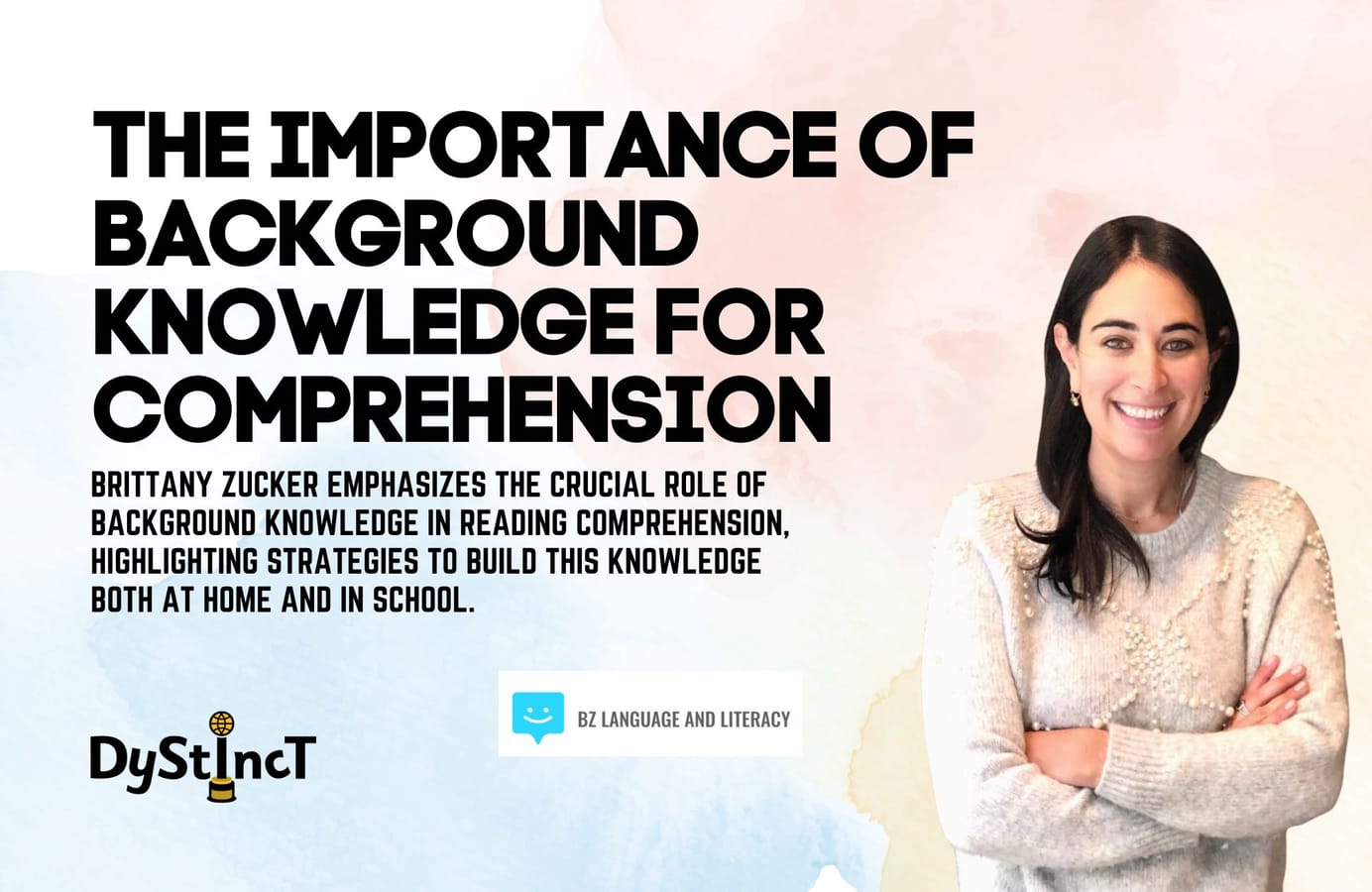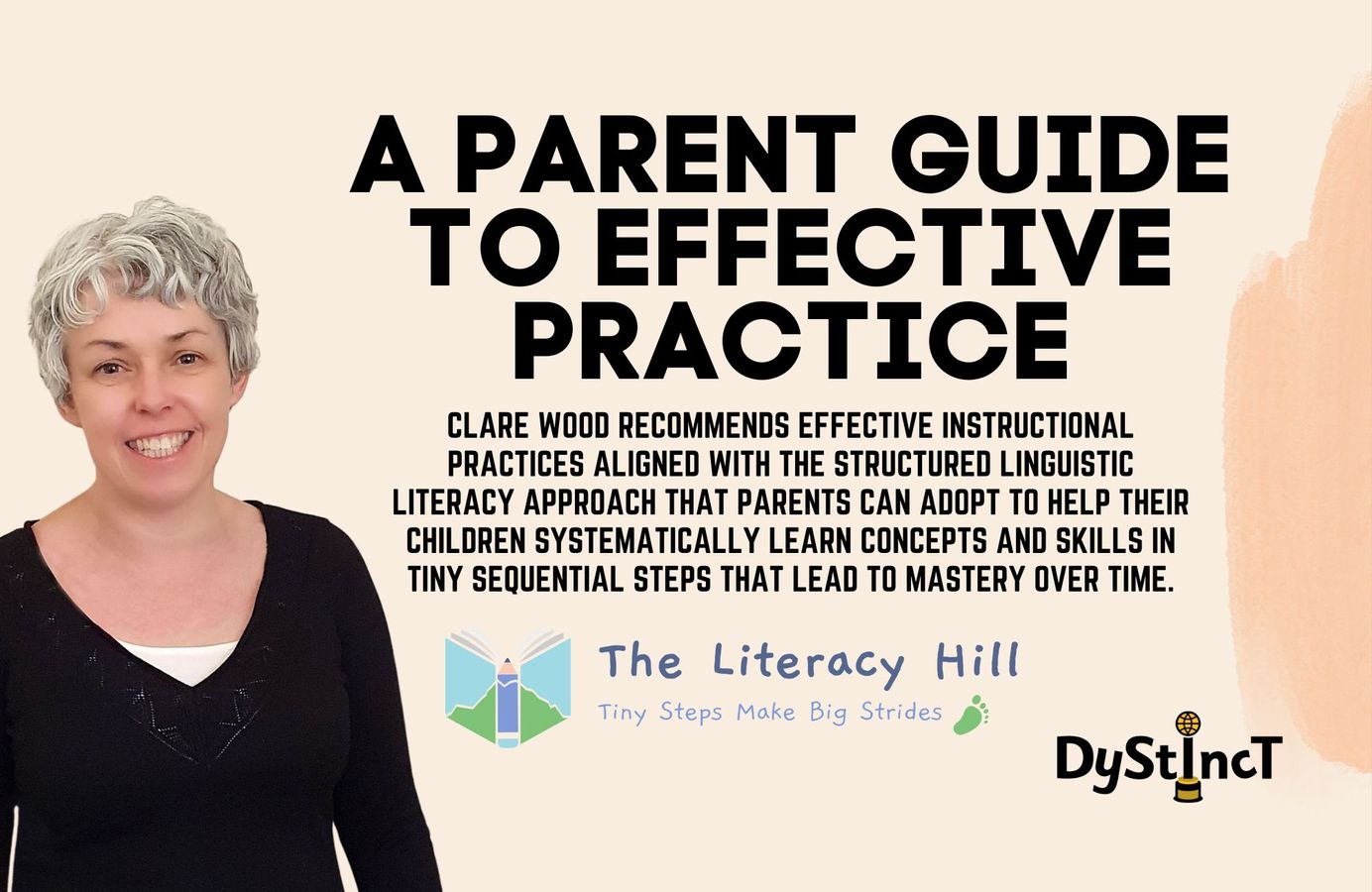
Issue 13: A Parent Guide to effective practice | Clare Wood
Clare Wood recommends effective instructional practices aligned with the Structured Linguistic Literacy approach that parents can adopt to help their children systematically learn concepts and skills in tiny sequential steps that lead to mastery over time.
We take reading and writing for granted. It's only when we have a child starting school that we really think about our ability to read, write and spell and how we did it.
Many parents are completely bewildered at the prospect of productively using the books sent home from school. We have to rethink instruction as a process that involves systematically learning about concepts and skills – starting small and building on. We blend sounds to make words. The letters on a page create the words we add to sentences to make meaning. To get to the meaning bit, we must help children crack the alphabet code to become proficient readers, so they can effortlessly decode and have more space to think about vocabulary and meaning.
Reading together can be an enjoyable activity, but even if we bathe children in literature, they don't come out the other end literate fluent beings. Reading with children from the earliest moments creates connection, and the activities and discussions that follow fill their heads with words that develop vocabulary and meaning. Add in systematic, explicit instruction and children will be able to discover the joy of reading for themselves.
To teach something well, the teacher (parent or educator) should understand the concepts and skills that underpin literacy learning. It's all about creating a systematic path. The correct instruction turns an uphill battle into tiny sequential steps that lead to mastery over time.
To begin with
we have to work with what we've got.
As David Crystal states in the Encyclopedia of the English Language:
The present-day alphabet consists of 26 letters, but there are roughly 44 sounds that we say to create words that make our sentences. As there isn't a 1:1 correspondence, we use many combinations to create the spellings in the system, including bigger chunks called morphemes that create new words and a difference in meaning. There is a lot to learn, and it is an uphill battle if the instruction is all over the place.
Literacy learning
is a hill to climb, not a mountain.
Children require explicit, systematic instruction to flourish. If we compare literacy to swimming, we teach swimming explicitly with no argument. We don't throw children in the water and expect them to swim. We also don't discuss water and share information about water and expect them to swim because we have shared the relevant information. Most of us take children to swimming lessons that gently guide them through explicit practice. The same should be true of learning to read and spell. Right now, some children are drowning in a sea of words because of the absence of explicit instruction. The amount of instruction varies — it depends on the child. Learning to read is a journey that takes time, effort and a knowledgeable, engaging teacher who champions the case.
For some, it is a trek, and for others, a bump in the road. The correct instruction helps all children climb the literacy hill — it's a great view from the top! As with all skills, if we don't serve our children and help them to receive efficient, engaging research-supported instruction, the hill quickly turns into a mountain — it becomes an arduous climb, and some never reach the top!
If we take children on a journey of tiny cumulative steps, it is a doable and rewarding journey that pinpoints who needs intervention to get to the top.
It is best to use the gradual release model —I do, We do, You do approach so that all children feel secure in their environment and within themselves. This method of delivery supports both the teacher and the student. Instruction has to be effective and show the way. It has been suggested that the gradual release model helps all students lift off and become 'can do' people—I have the skills and knowledge, and now I know how to connect the dots and transfer my knowledge and skills.
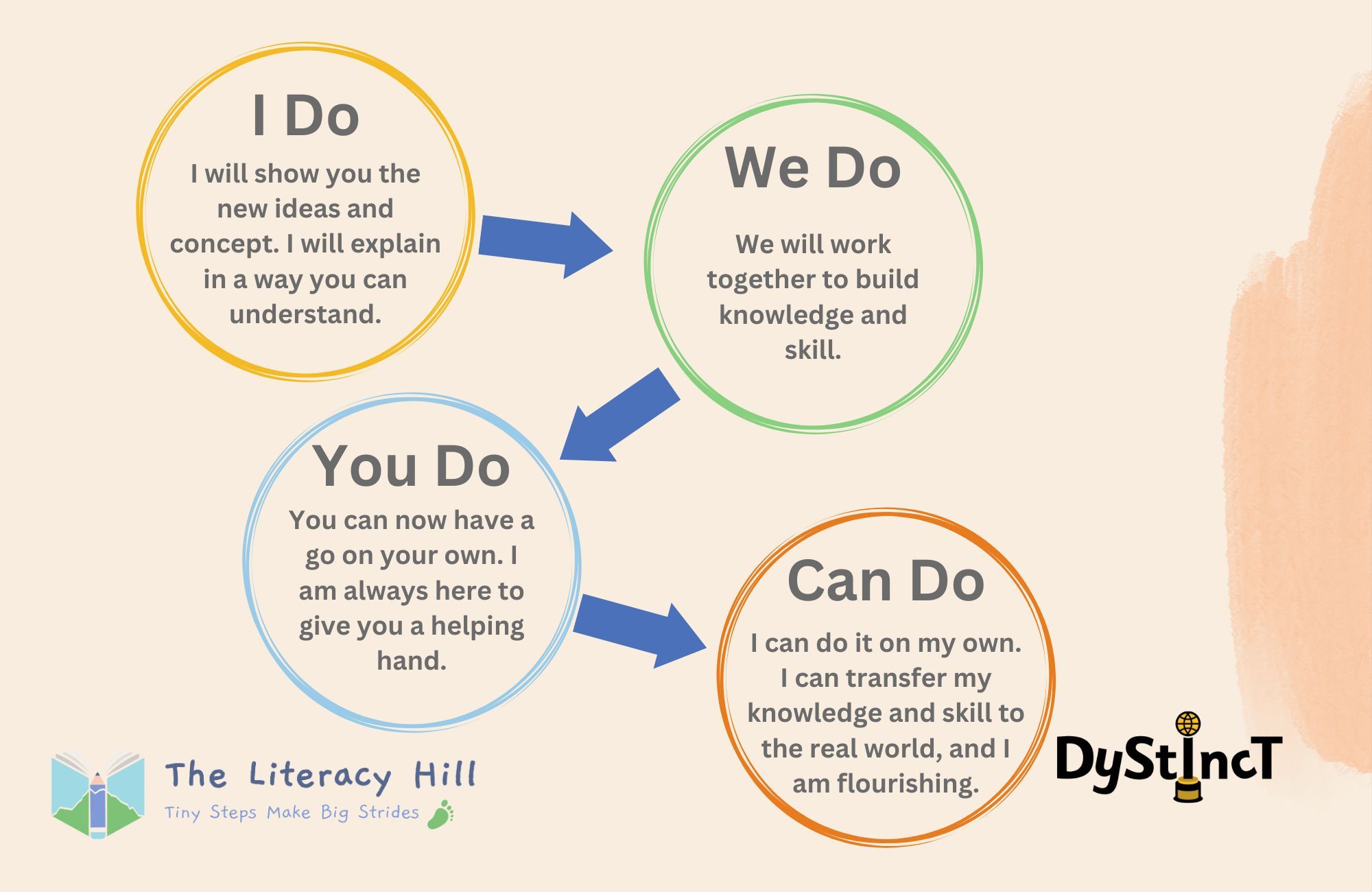
There are steps we can take to smooth the path. Some key concepts and skills must be developed.
Start with the knowledge children already have
Explicit, systematic instruction showing how sounds correspond to individual letters, letter strings and morphemes is an effective practice. Children know a lot about language before they set foot in school, so working from their point of need and what they know, gradually working to the unknown, will create context and a reason for learning. This helps engagement and motivation when the going gets tough.
A traditional route is to teach letters in isolation—it will work for some, but it's not the most effective route as this arbitrary knowledge requires memorisation of both the letter and the sound. There is no context for learning and no glue to stick the two pieces of information together. The most effective route is to teach letters in the context of words. A cumulative approach of taking a small pool of frequently occurring letters and building on them to show regularity and patterns is the way forward. This type of instruction takes the information a child already knows—the sounds they say—and teaches how to pull words apart into individual sounds and put them together to read the word. Word building quickly and effectively teaches the foundational skills of segmenting, blending and phoneme manipulation. The act of word building gives a meaningful context to learning. Learning to read and spell simultaneously demonstrates that the alphabet code is reversible and more systematic than you might think. Starting with spelling as a route to decoding helps students to see how sounds correspond to the letters on the page. This approach links the information a child already knows to the new information they encounter in the classroom—I can say it, spell it, and read it.
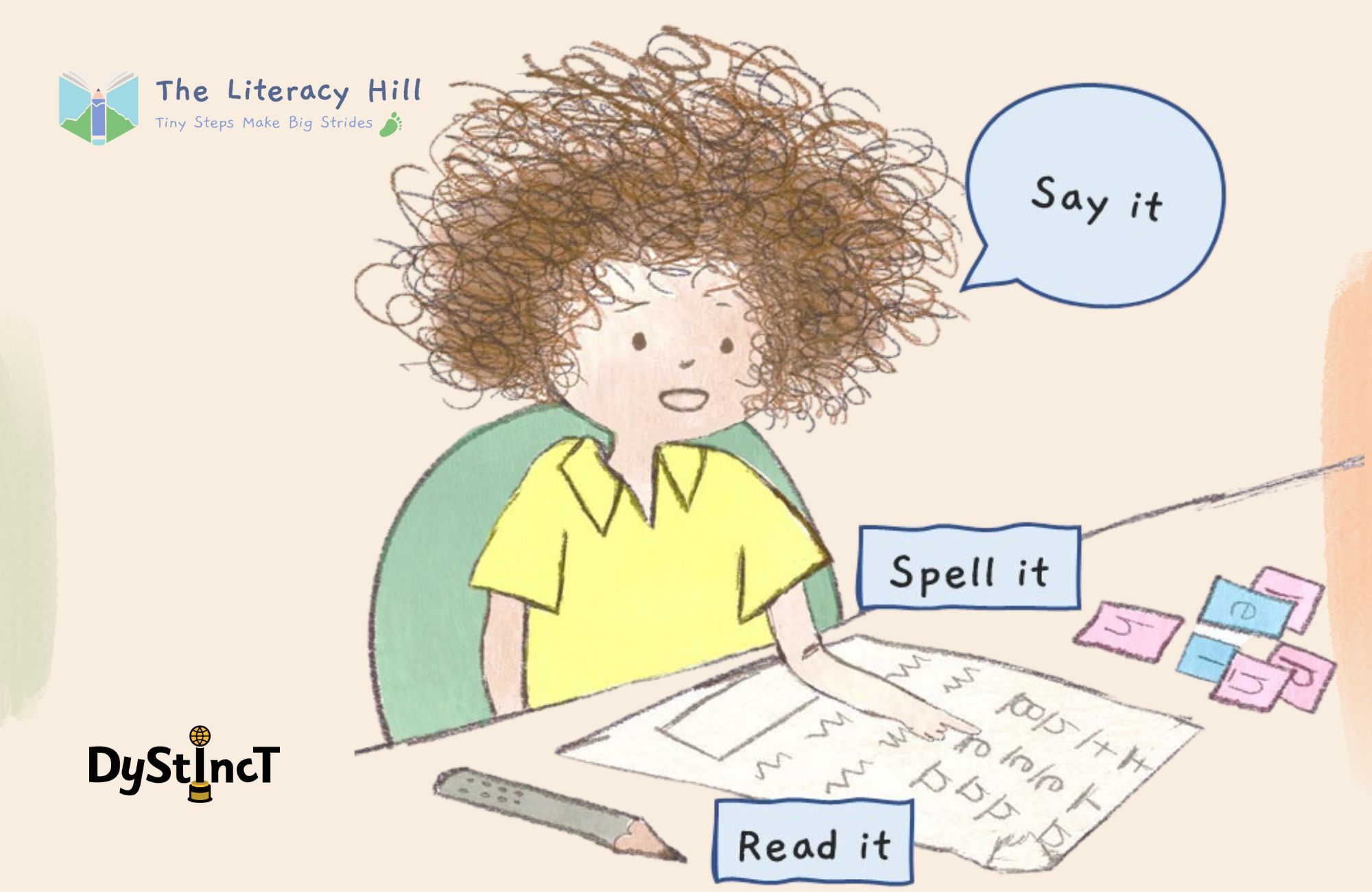
Move from simple to complex
Effective practice teaches the initial code first. This sets the scene for later learning. Explicit instruction should go hand in hand with a daily read-aloud of other texts to expose students to more complex words, sentence structure and themes that can be the catalyst of conversations that build vocabulary.
All non-readers have to learn how to decode words efficiently by sound all the way through. As children segment words into individual sounds and blend them to make words, they connect sounds to symbols and form what researchers call orthographic connections. We help children make these connections by teaching how the very sounds they say all day are part of words that can be pulled apart.
Once children know the correspondence between the sounds they say and the initial code and have the skills of segmenting, blending and phoneme manipulation, we move on to share consistent spelling patterns. To begin with, all students will make lots of errors as they read and spell. There are many irregularities once we get past the initial code. The spelling system represents sounds but also meaning. Words convey meaning, but spellings also convey meaning. Research shows that the explicit teaching of spelling patterns is beneficial. Just like early instruction, work on spelling patterns is best done systematically to show regularity.
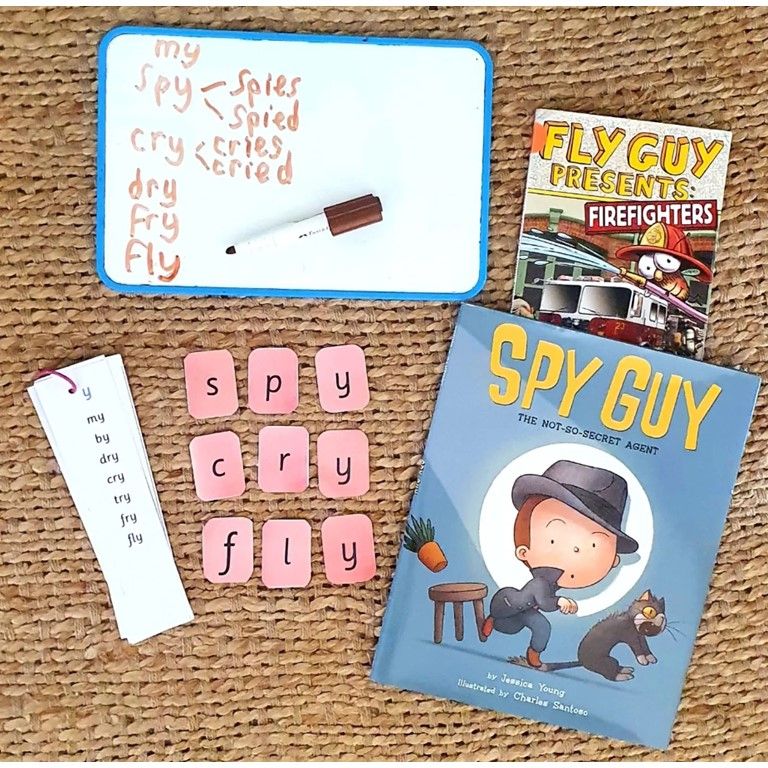
We can do most of this work by linking instruction to good-quality literature. This exposes children to words beyond the scope and sequence in a scaffolded environment.
I read books, and we read books.
Many students will need a considerable amount of repetition and exploration alongside explicit instruction to automatically start using their alphabet code knowledge to read and spell words fluently and automatically.
Decodable books have become very popular, but a text is only as decodable as the teaching and learning before the reading. The first books a student reads should be transparent to the learner so that they can build skill, enjoyment and confidence. All children thrive with books that have letters, letter combinations and words they already know. There are now lots of decodable readers just perfect for children to read all the way through.
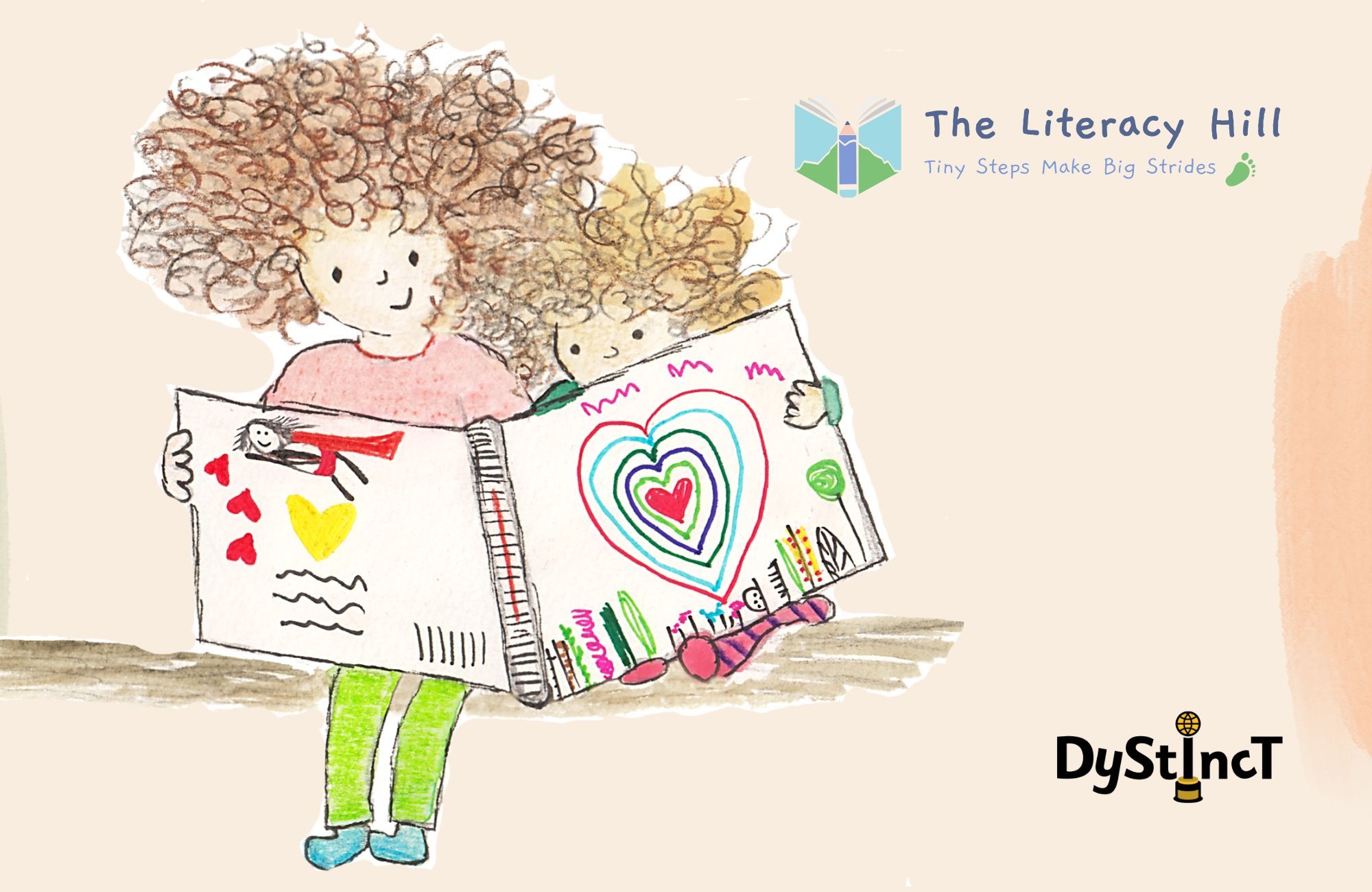
Decodable books are a bridge to fluency. The purpose is to provide the repetition needed for fluency. These texts offer a heavy dose of the sounds and spellings of previously taught code. They are the perfect scaffold to show students consistency and build confidence. But these are just some of the books students should be reading. In my clinic, I send home decodable books and non-controlled texts. The decodable books we call 'I can read on my own books' are for students to read to a parent or carer. The non-controlled books we call 'We can read together books' are usually picture books or short novels with a link to the session that the student and carer can read together to showcase more complicated language and sentence structure. These books have beautiful sentences and rich vocabulary to discuss. They are the perfect resource to implicitly point out interesting words and spellings to help children make connections to prime future learning.
Let's move on from look cover write check
Lists of words often go home in the book bag for memorisation. They might be called high-frequency words, sight words, Golden Words, Fry Words, Dolch Words, Heart Words and so on. Many words on these lists have spellings that are not taught in the first year of school. We should teach common words such as: 'the', 'I', 'he', 'she', 'be' and 'me' before they appear in decodable readers.
We should also group words into families to help them stick. These lists also contain many decodable words that can be sounded out using initial phoneme-grapheme correspondences. We should integrate these first decodable words into the teaching scope and sequence. We should switch the weekly rote memorisation spelling test and move on to a pattern-based spelling instruction format. A weekly dictation of sentences that have a heavy dose of previously taught spelling patterns will help children see the logical patterns that are alive in the English Language. Curated pattern lists help teachers build better explicit instruction and are a much better resource than lists built on word frequency alone. When we move beyond initial instruction, we should be giving a higher emphasis to the role morphology plays in spelling. We need to break up with syllable type activities and work on the relationship between morphology and phonology to chunk longer words into smaller units. This brings the relationship of meaning into the process of linking pronunciation and spelling. To do this, all teachers need ongoing professional development to help them teach spelling effectively and connect spelling instruction to other curriculum areas.
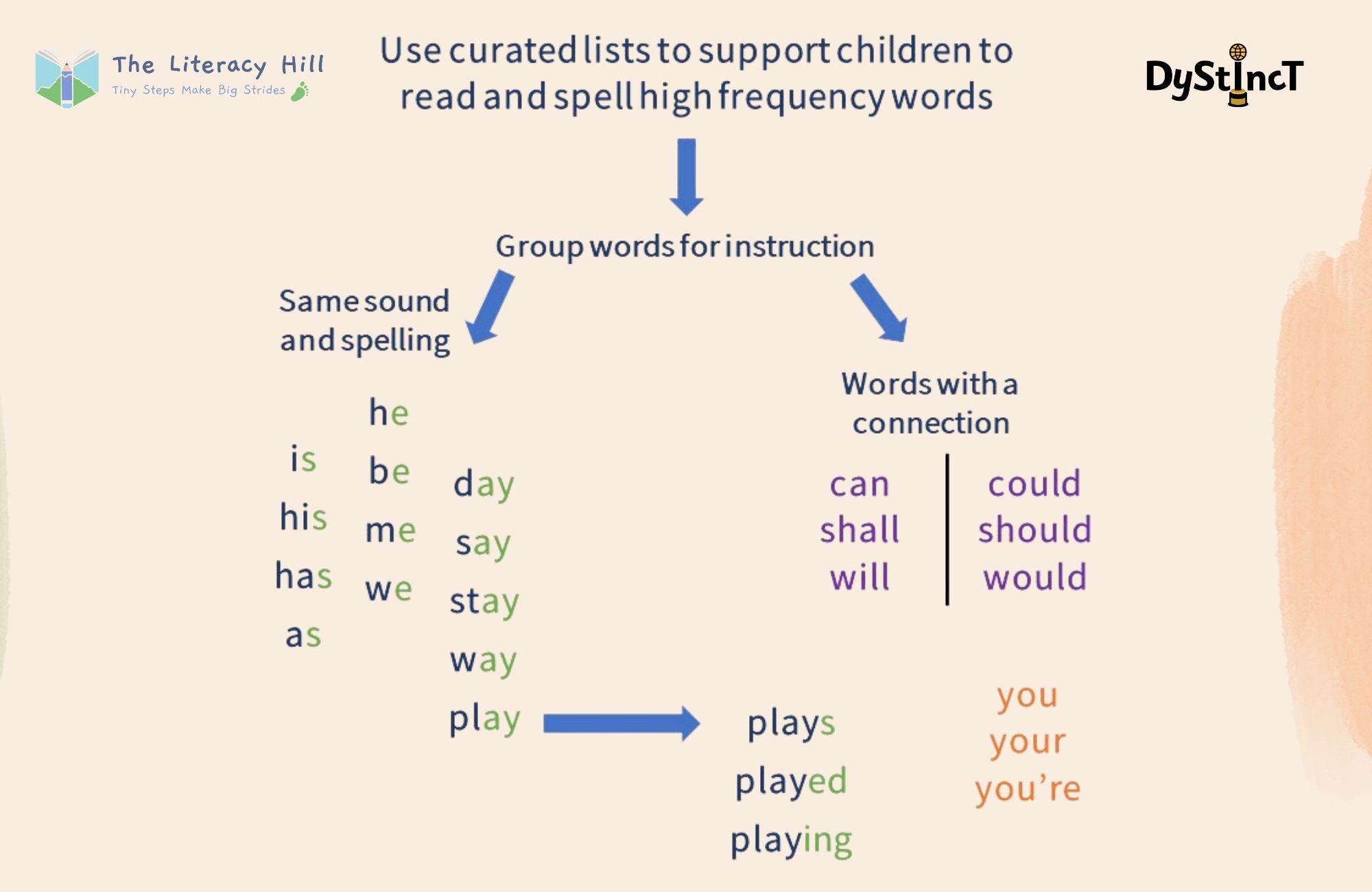
Explicit writing instruction
Many children find writing difficult because they need to gain the skills and code knowledge to get their ideas down on paper. Some will want to compose letters and cards from their earliest days. But others will find apprehension in not knowing. Teaching the code and how to write sentences from the beginning sets children up for success.
It's crucial that when we help children build sentences, it starts orally. My students always have something to say as we meet or something to show me. They will often interrupt sessions with amazing facts and tales of the weekend. But when the tricky bit about writing begins, they have nothing to say. Talk of the bunny, the trip to the beach and do you know, "I am growing wheat in my bathroom," all float away.
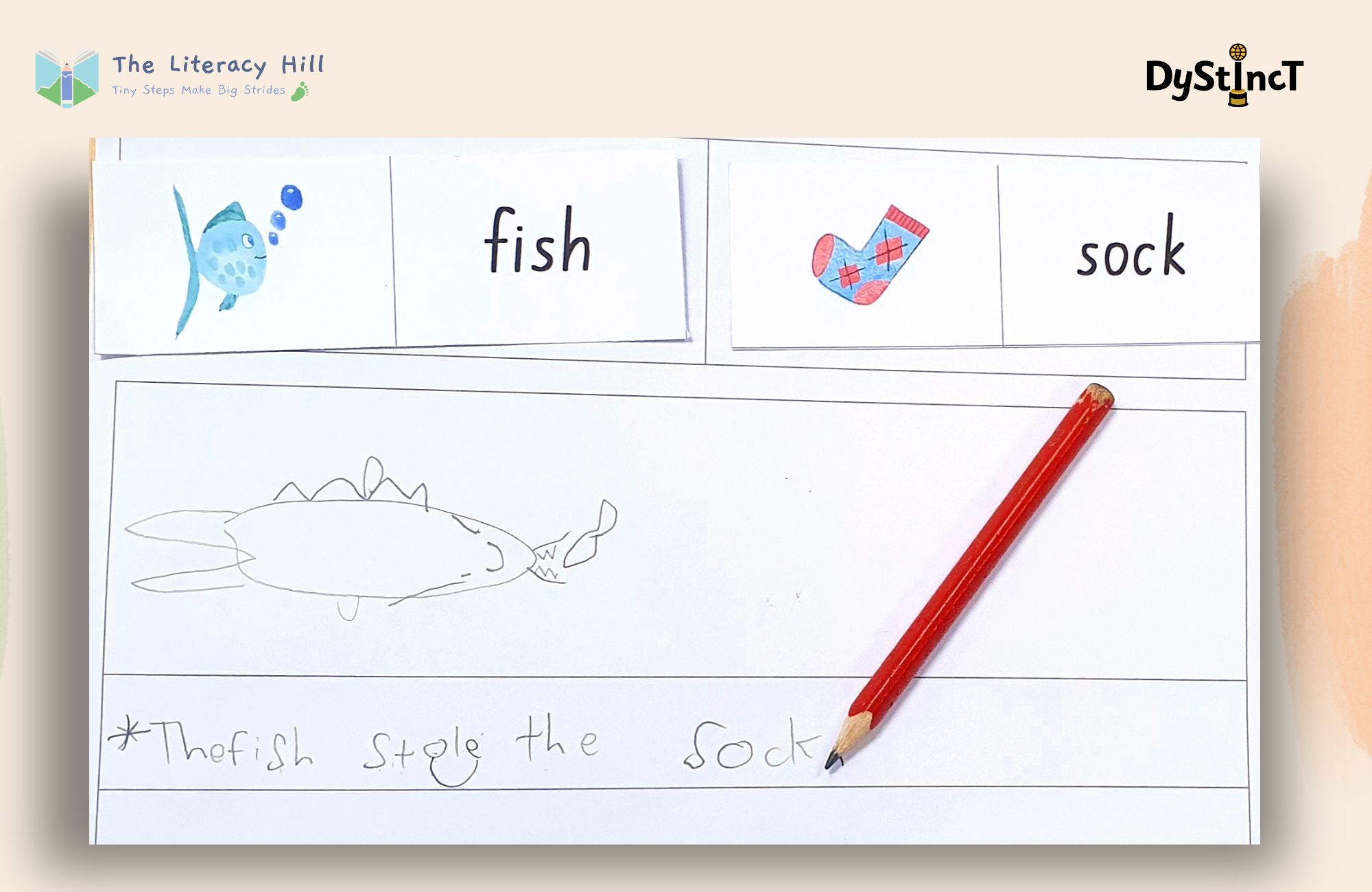
If you can't say it, you can't write it.
We must help children develop the habit of saying their sentence first. Next, say each word as they write. Finally, read back their sentence.
The talk of the beach, bunny, and wheat often involves sentences that would take too long to get on paper. These children are great communicators. They have lots to say. We must hone these skills through games and instruction, so they come out the other side able to write.
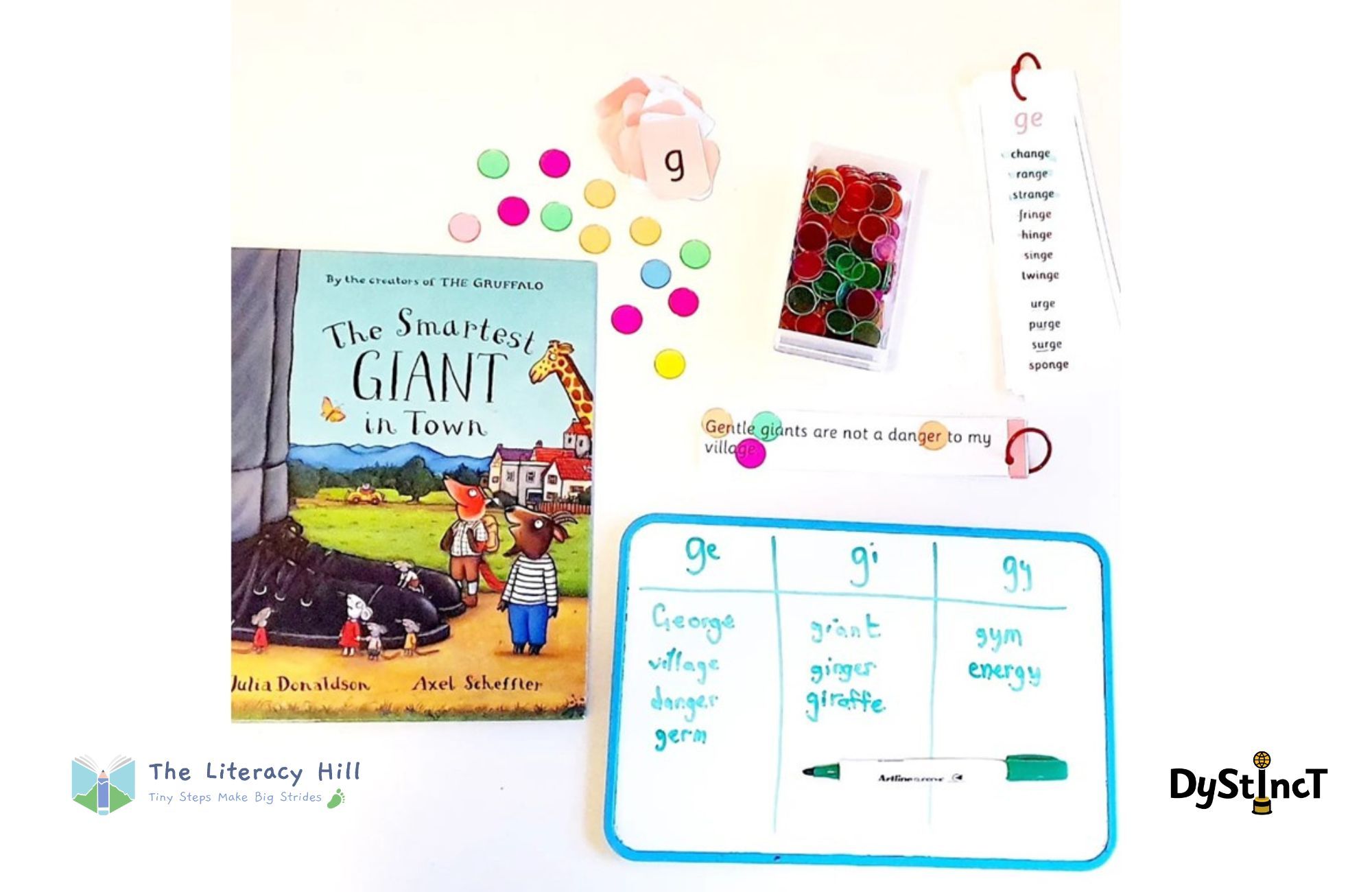
If we provide scaffolds for writing, we reduce the demands of the task.
Working memory can't hold onto anything for too long, so we shouldn't ask our young writers to write at length — it should be quality over quantity.
Early writers know little code knowledge and can get tangled up in what they want to say. Children have to build up their writing stamina. They can come up with brilliant sentences with too many tricky words. Dictation is a great activity to model how to write a sentence. This quick activity helps children feel successful because we have taken away the creating part. We often add on to these sentences by using conjunctions to add information. This also doubles as a decoding activity because the children must read the sentence back to add extra details. Writing should be a structured activity that builds on phonics instruction.
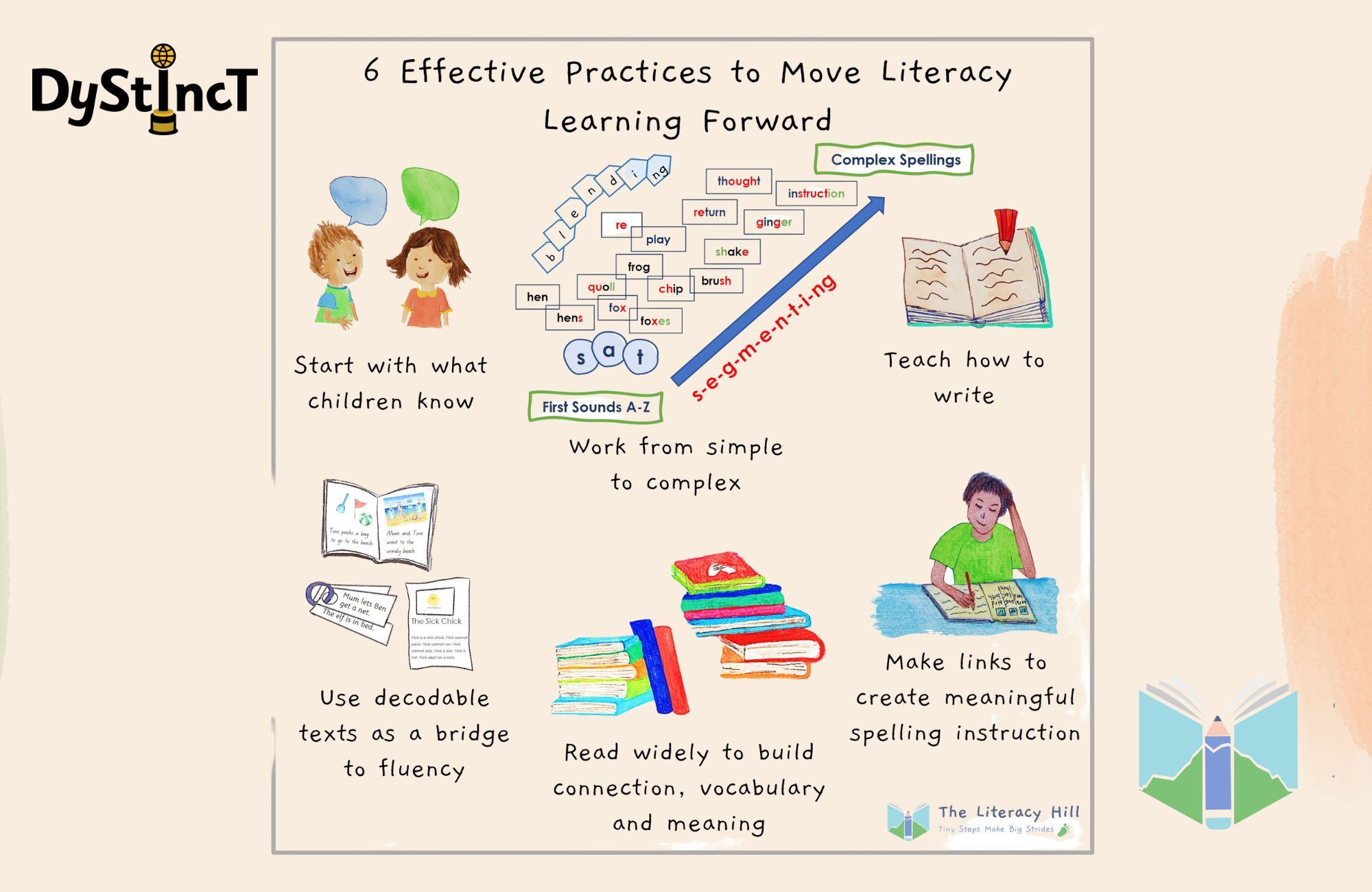
Becoming literate is a journey that happens over time. We must scaffold the process and use effective instruction to embed skills and knowledge, allowing students time to explore and repeat their new-found skills and knowledge. Writing instruction must be front and centre in Foundation stage classrooms to set the stage for later work on sentence instruction.
Clare Wood
Literacy Specialist and Founder of The Literacy Hill
TheLiteracyHill.com | Facebook | Instagram | Twitter
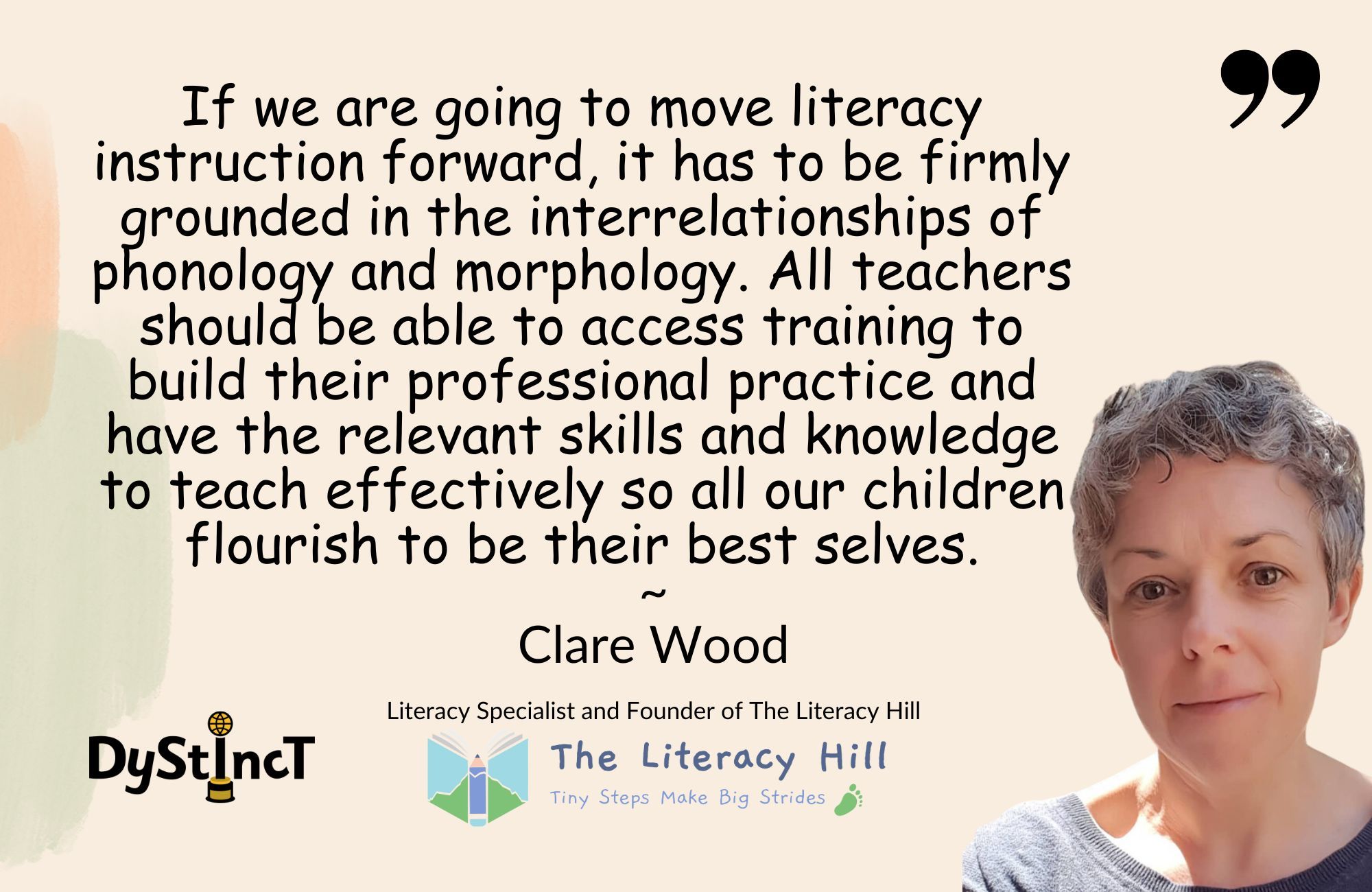
Clare Wood is the owner of The Literacy Hill clinic in Perth, Australia. Clare works with parents and teachers to offer support and training in the areas of early years and effective literacy practices. Clare has a degree in English Literature and Language and a Post Graduate Certificate of Education with a focus on Early Years and Literacy. Clare is the maker of cost-effective, evidence-based literacy resources that can be used alongside any systematic program to improve skills in a playful way. Clare is also the author of many free infographic posters to educate parents and teachers about metalanguage.
Extracts from Dystinct Magazine
























